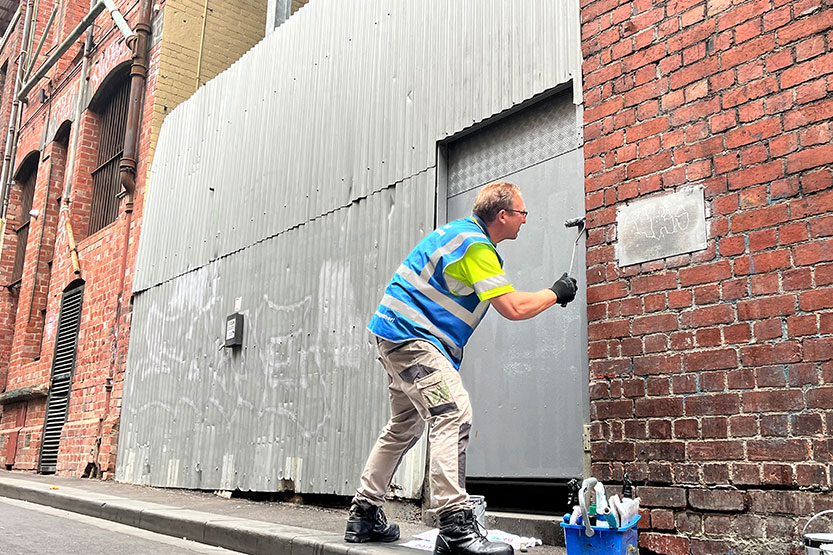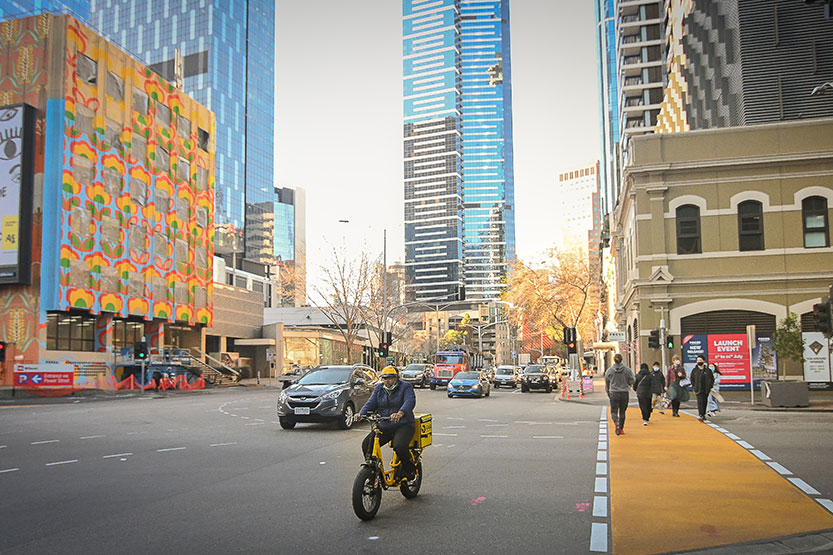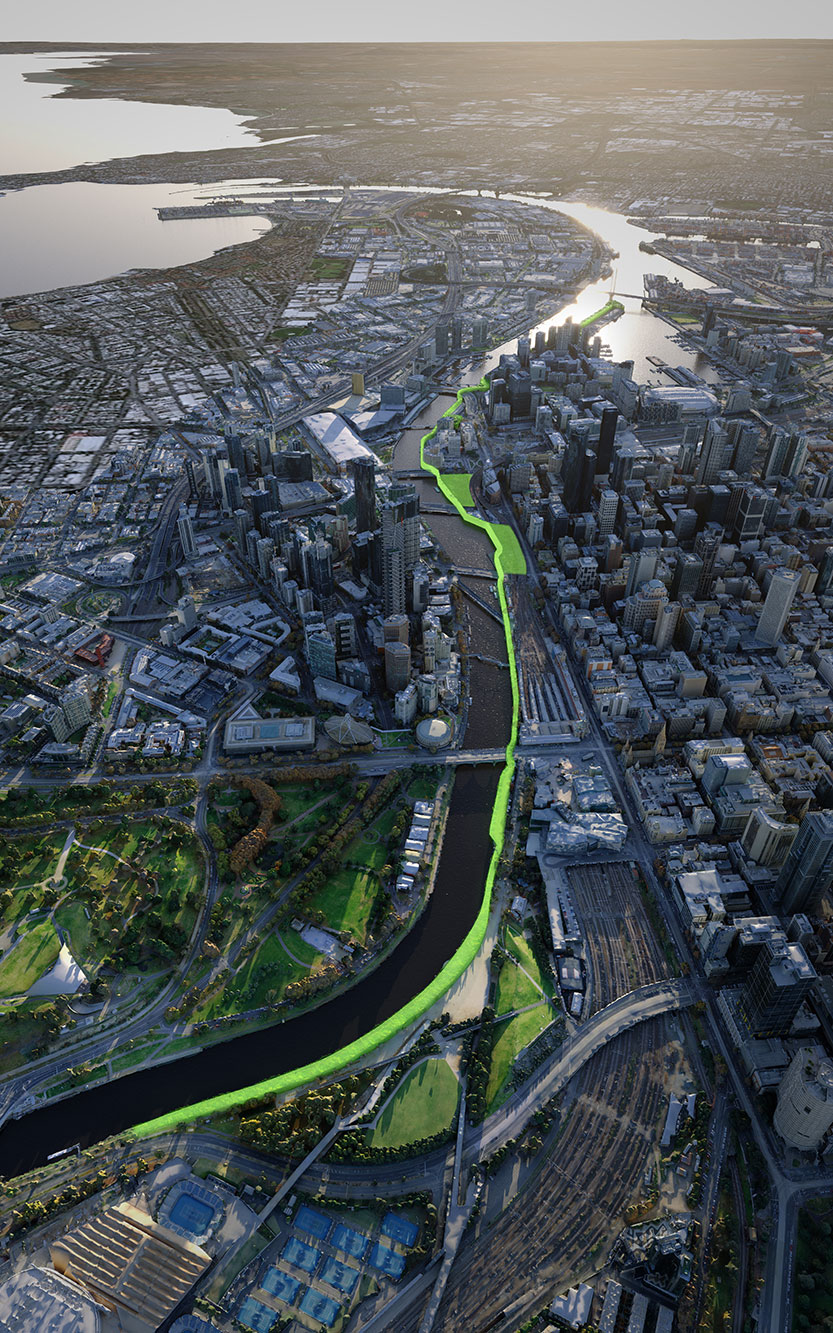
The good, bad, and delayed: Council releases “honest account” of how key projects are tracking
The City of Melbourne has released an appraisal on where it’s falling behind, and what it’s doing well.
The City of Melbourne has conceded key projects like Greenline and the Queen Victoria Market renewal were behind schedule as part of an “honest account” of key initiatives.
The appraisal, as part of the council’s annual report released in late October, featured concessions it had not met some goals set out for the 2022-23 financial year.
Other indicators within the municipality were positive, in particular, slashing the number of shopfront vacancies, which had become a feature of the COVID-19 pandemic.
However, the council acknowledged that key milestones for big-investment projects had not been met.
As part of a warts-and-all report of happenings throughout the municipality, the City’s two key projects in Greenline and the QVM precinct renewal were marked as “behind schedule at 30 June 2023”.
A pledge to establish a funding plan for Greenline – crucial for the full project going ahead – and beginning stage one works at Birrarung Marr were not met.
Southbank News revealed in September however that works on site one (at Birrarung Marr) would begin in April 2024.
Key 2022-23 milestones for the Queen Victoria Market precinct renewal (the council’s largest ever investment) such as completing the sheds’ restoration and the Food Hall, and starting works on the new Trader Shed, weren’t met either.
However, the latter two weren’t far behind schedule; the Food Hall was set to open in November and works began on the seven-storey Trader Shed in October.
Some delays, the council said, were out of its hands.
“There’s no doubt supply chain issues, experienced by others in our economy, have affected our capital works,” City of Melbourne CEO Alison Leighton noted in the report.
Deputy Lord Mayor Nicholas Reece said the report was designed to identify where the council had “fallen short”, and to “hold ourselves to account”.
He argued they had even gone further than required.
“We’ve been fully up-front about activities that have been delayed or deferred and where we’re behind or ahead of schedule,” Cr Reece said at the October 31 council meeting.
This report goes way above and beyond what’s required under our statutory reporting obligations. Way beyond.
Long-time Greens Cr Rohan Leppert said the reporting was “best in the [local government] sector”.
“This sets the standard now,” he said.
“This is a level of disclosure on not just how each major initiative is being progressed over the course of the financial year but each individual activity beneath that, and it’s an honest account as to whether we’ve been able to complete those activities or not.”

The council said one of its successes in 2022-23 was around retail recovery.
In the two years to June 2023, it had more than halved the number of empty retail spaces, from over 31 per cent to 14.4 per cent.
The “Shopfront Activation program”, which concluded in March, transformed 67 vacant shops into new retail spaces and enterprises in the CBD, Lygon St and Docklands.
Its business concierge team provided 14,081 businesses with support and mentoring.
The council’s city activation chair Cr Roshena Campbell said the program was “the most tangible example” of the city’s economic recovery.
“Anyone who walked the streets of Melbourne after COVID, towards the end of 2021, the fact that more than 30 per cent of our shops were vacant was one of the most stark realities about the impact of the pandemic on our city,” Cr Campbell said.
“The fact that we have halved that rate, that we are now down to 14.4 per cent, says a lot about how strong our city is, about the green shoots and the fact that we’re coming back. But it didn’t happen on its own.”
She said there was still a way to go.
“The reality is 14.4 per cent isn’t good enough, we know that we’ve still got to go further, but it does say that we have come very far along this journey and anyone walking our streets today can see the difference.”
Lord Mayor Sally Capp said while they were formally required to release an annual report each year, this year’s went above the minimum requirements and urged locals to read it online.
“Really what is the point of this document if it’s not a document that welcomes and encourages people to read it, and to gather that information and to hold us accountable and to be involved in that measurement of our progress,” Cr Capp said.
“We can also see from the Annual Report that nothing is ever really over, really. And it does really set us up for the ongoing work at council.”
Major projects behind schedule
- Greenline
- Queen Victoria Market precinct renewal
- Munro library and community hub
- Increase of public open space
- City Road Master Plan
- Increase/upgrade women’s sport facilities
Major initiatives on track
- Power Melbourne
- Homes Melbourne
- New neighbourhood model
- Public art program
- Heritage reviews/new planning scheme amendments
- Delivery of new design panel/committees
- Rapid response cleaning team
What’s going well?
- Gross local product: $114 billion (up from $107.4 billion in 2021-22)
- Number of jobs: 480,600 (up from 465,600)
- Number of visitors: 12.4 million (up from 6.3 million)
- Vacancy rate of retail premises: 14.4 per cent (down from 19 per cent)
- Number of start-ups in the municipality: 1251 (up from 1180)
What’s not?
- Municipal greenhouse gas emissions: 4.55 million CO2e (up from 4.23 million CO2e)
- Number of businesses in the municipality: 13,829 (down from 14,513)
- Proportion of dwellings within 300m of public open space: 94.7 per cent (down from 96.3 per cent)
- Proportion of people reporting food insecurity (no change)
Other positives:
- Average score out of 100 for resident wellbeing: 73 (up from 72 in 2021-22)
- Proportion of people who regularly visit a park in the municipality: 88 per cent (up from 85 per cent)
- Proportion of people who participated in arts and cultural activities in the municipality: 24 per cent (up from 19 per cent)
Other negatives:
- Number of people supported through a range of accommodation: 91 (down from 118)
- Number of trees planted in the municipality: 2554 (down from 3041)
- Melburnians’ self-reported sense of belonging to community: 63.1 per cent (down from 64.8 per cent)
- Number of people sleeping rough who have not been offered accommodation: 73 (up from from 38) •

Revitalisation of Alexandra Gardens progresses

Build-to-rent development gets green light in South Melbourne







 Download the Latest Edition
Download the Latest Edition